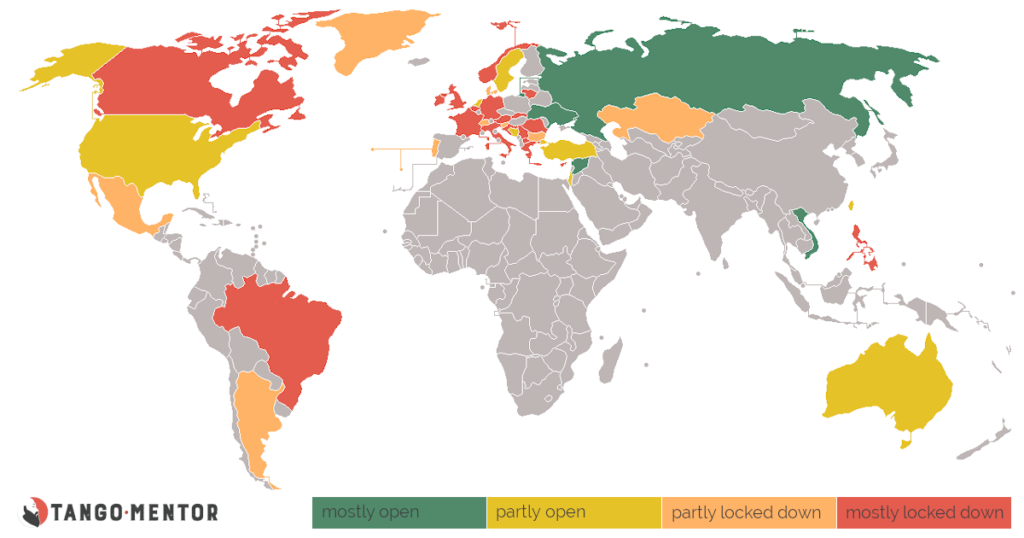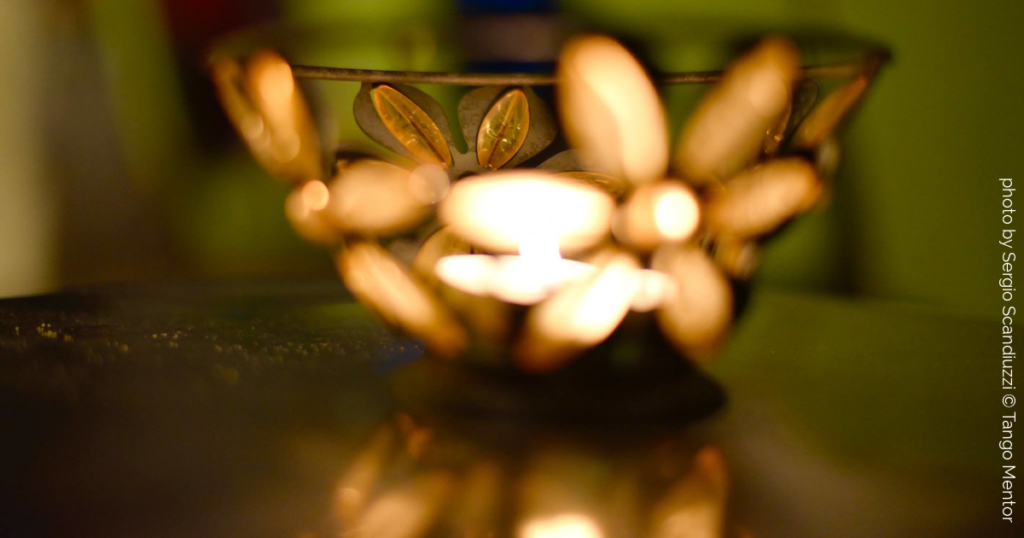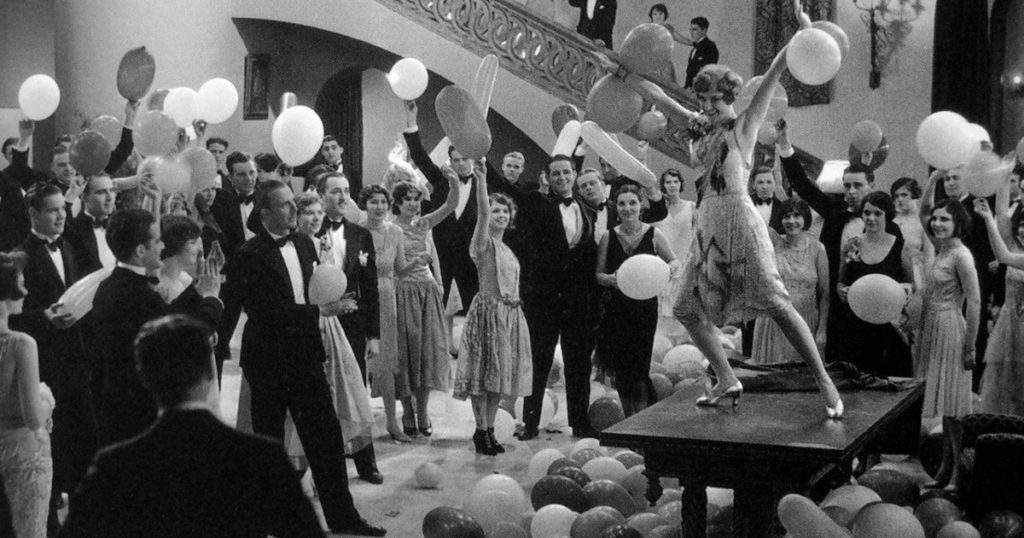
Our worldview is often limited by the status of our environment: if people don’t dance in our community, we assume that that is the norm everywhere… But this can’t be any further from the truth!
This is why I decided to make a little survey about where people dance and what they do to protect themselves and others during these crazy times. I started in October and since I’ve got great feedback, I decided to repeat it every few months.
My little survey have just four questions: I asked the participants about tango classes, practicas, milongas and international events in their country. They had to check these answers for each category:
- As normal
- Only with safety precautions
- Only private
- None at all
I sent this survey to the readers on my mailing list and waited for two weeks. I noted that some of them shared the survey to their tango friends as well.
What was the feedback?
The number of people that answered was exactly 100. I want to use this opportunity to thank them all and also, to thank those who shared the survey.
If your country was not included in this survey, be sure to sign up to my Newsletter, so you will be notified when I send my next survey. I plan to do my next survey sometime in February 2021.
After closing the survey and short analysis, I created the map above, where I averaged the responses. Have in mind that this is not exact information – it is approximation with the goal to give us picture of how are things developing in the tango world.
If you are curious to see the details of the report, sign up here and I will send the report right in your inbox.
The form you have selected does not exist.
So, what are the news?
I’ve got messages from all around the world and people are responding in similar way (depending on the situation they are in). They’re trying all kinds of measures just to be able to resume with their tango activities: from using masks and dancing with fixed partner; events where they leave their phone numbers for eventual contact tracing; online classes and milongas, to “illegal” private events…
Hey, sorry to interrupt…
Do you like reading my articles? If you do please consider a small contribution to the existence of this blog.
I don’t sell a book or run ads: I share these articles for free. Unfortunately I also have to pay my bills, so if you see value in my work please consider a small donation/gratuity (the same way you tip your favorite bartender).
From my heart to yours!
Ivica
Securely processed via PayPal
From what I can see, there are two conclusions from the survey: the first one being that the situation is much worse than it was two months ago – and that is something which was expected. The number of cases in the world rises and shows no significant flattening of the curve.
On the other hand, despite this fact (and here is the surprise) we still see some countries and some communities dancing and tango life thriving as it was before… I don’t say is it’s good or bad (although I like it), all I conclude is that there’s a hope for tango and it will for sure return the way it was!
PS. I want to express my special word of encouragement to people of Syria… I’ve got this message:
“Tango for us in Damascus/Syria is the most important activity we do; Our life is very tough, so tango is our beacon of light…”
Keep on doing that! Take care for each other and better days will come… I am sure of it!
And for the rest of us… maybe some are not aware of it, but tango (and physical closeness; intimacy; human touch) is the beacon of light for all of us!


